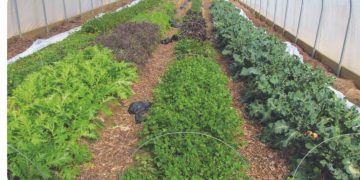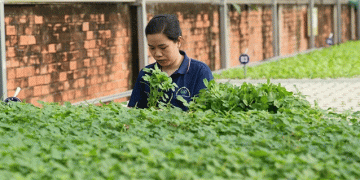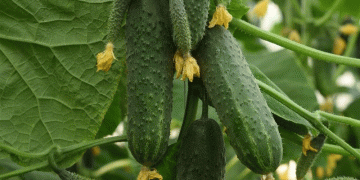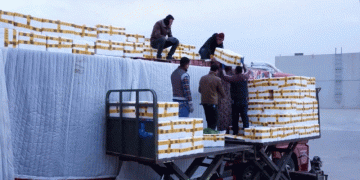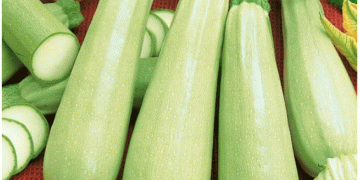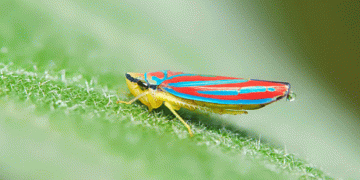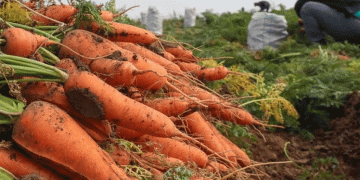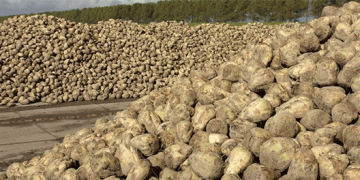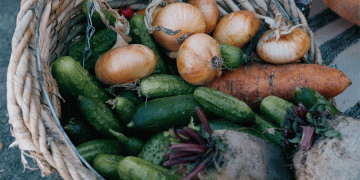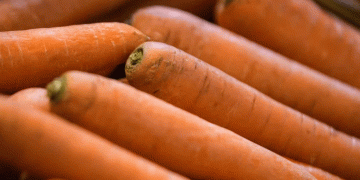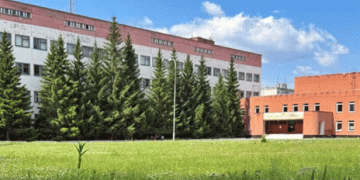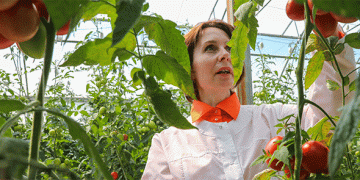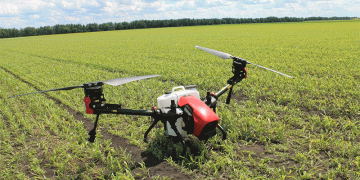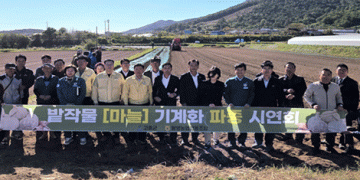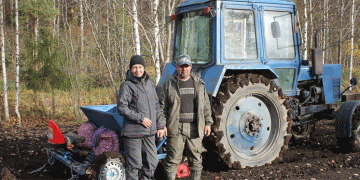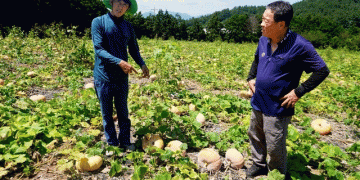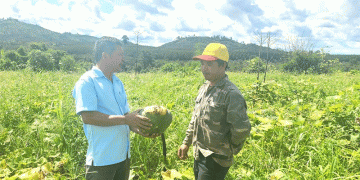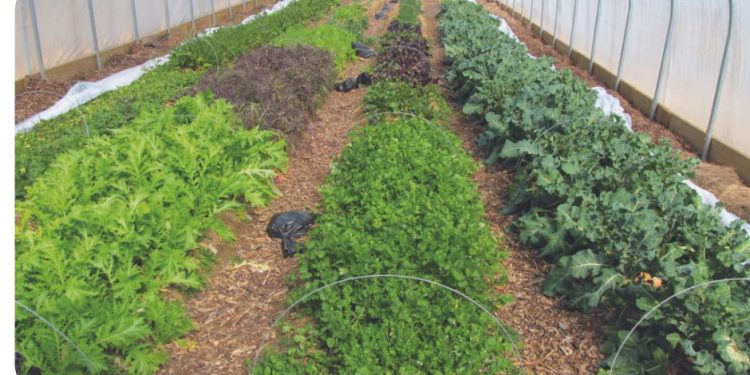In 1998, when Mike Orzolek and myself founded the Penn State Center for High Tunnel Research and Education, we were building on the excellent research and Extension work already conducted by Otho Wells, University of New Hampshire.
In recent conversation with Wells, professor emeritus, he said that he began investigating tunnels back in 1983. His first tunnels were made by bending electrical conduit into hoops wide enough to cover a row of tomatoes grown using black plastic mulch and drip irrigation and were six feet high.
Wells then connected with Ed Person from Ledgewood Farms in Moultonborough, New Hampshire who was experimenting with manufacturing of walk-in high tunnel frames and together they perfected a walk-in high tunnel design for the New England region and a system for growing early tomatoes. When Wells retired in 1999, Mike and I already decided that there was still more research and education that needed to be done on high tunnels, and in 1998 we began constructing 17-foot-wide by 36-foot-long high tunnels purchased from Ledgewood Farms.
We also involved our county Extension educators, who gained valuable hands-on experience on siting and construction of high tunnels. Initially, we duplicated the high tunnel design and system of production for tomatoes that Well’s had perfected and grew our first crop of tomatoes.
We then changed the original endwall design to allow a small 21-horsepower, four-wheel drive tractor to rototill the soil. We used a newly designed small plastic laying machine laid 3-foot-wide plastic, making an 18-inch-wide, raised, plastic-covered bed with drip irrigation tape.
Over succeeding years, research continued on a wide variety of vegetable crops and Kathy Demchak, Penn State small fruit Extension specialist, began her excellent pioneering research on the production of strawberries, red raspberries and blackberries. Over time, we grew every vegetable from asparagus to zucchini in the high tunnels. At the peak, we had over 30 high tunnels ranging in size from 14 by 20 feet to 30 by 96 feet, so growers and others could see the various sizes of high tunnels available.
Growers also were exposed to different methods of production, from raised wooden beds, ground bed plasticulture production, organic production, small fruit and cut flower production. Through numerous workshops, publications in a wide variety of media, presentations at grower commodity meetings around the country and on-site visits to the center by a host of researchers, Extension specialists and growers, other university high tunnel programs around the country were initiated and growers continued to put up more high tunnels each year.
In conversation with Wells, he said that in 1988 there were 15 high tunnels in New Hampshire and in 1998 – near his retirement – there were 175 high tunnels.
Where it stands
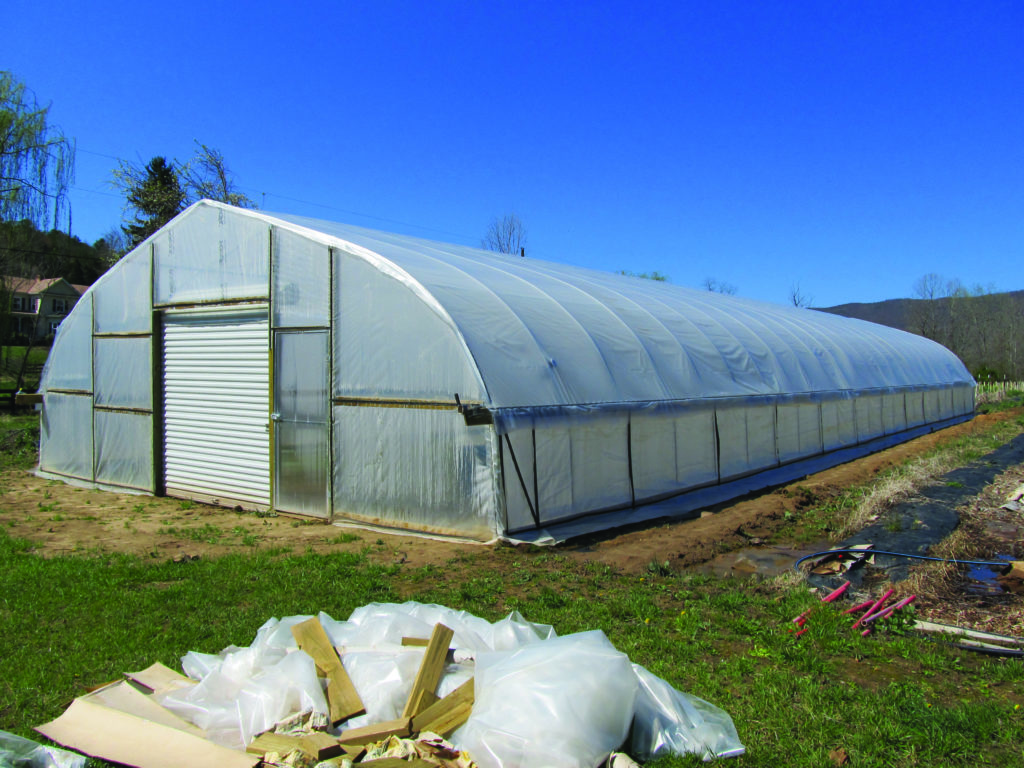
So what is the current status of high tunnels in the Mid-Atlantic region of the country? I contacted university researchers, Extension specialists and county Extension educators throughout Pennsylvania, New Jersey, Maryland, Delaware, Virginia and West Virginia. Their overall consensus is that high tunnel usage and associated high tunnel technologies continue to grow on a strong upward trajectory.
In addition, I contacted United States Department of Agriculture National Resource Conservation Services (NRCS) in the respective states to gather numbers of high tunnel grants that they have awarded since inception of that program on Oct. 1, 2009. It is important to note that these figures represent high tunnels that were certified by NRCS and money disbursed and not those that were cancelled or are in the pipeline to be approved.
Here are the NRCS responses by state: Pennsylvania, 408; New Jersey, 122; Delaware, 89; Maryland, 263; West Virginia, 222; Virginia, 614; for a total of 1,718 high tunnels.
The individual contacts’ estimates of high tunnels are: Pennsylvania, 2,200 – with over 250 in Lancaster County alone; New Jersey, 150; Maryland, 2,500; Delaware, 100; West Virginia, 850 and Virginia, 1,200. Most are stationary high tunnels ranging in size from 15 to 30 feet wide and 96 feet in length, although there are a number of multi-bay units such as Haygrove and a few moveable high tunnels throughout the region.
Companies that reported supplying high tunnels in the region are Ledgewood Farms, Atlas Greenhouse Systems, Growers Supply/Farmtek, Zimmerman’s High Tunnels, Rimol Greenhouse Systems, Crop King, Haygrove Tunnels, H. Schawartz & Sons, Puckett Greenhouses, Beiler Greenhouses and homemade units.
Tomatoes set the pace
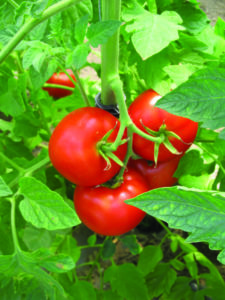
high tunnels. Photos: William Lamont
Tomatoes are the No. 1 crop by far. There is limited winter or overwintered production in the region and that consists mainly of root crops, cole crops and leafy greens and may be associated with organic production. Common problems mentioned were water quality issues, soil health and salt buildup in the soils, lack of good crop rotations, disease buildup in soils, regulation of the temperature in the high tunnels, wind damage and finding a crop that will make money.
Innovations observed in the region are more new technology and designs in automation of roof vents, sidewalls, new family of tunnel coverings coming into use, water catchment systems for high tunnels, adoption of solar power, new family of moveable tunnels, incorporation of biological controls and more integrated pest management. There is more interest in management techniques to improve soil health in the high tunnels and continued evaluation of varieties for high tunnels and new crops.
Everyone agrees that the use of high tunnels will continue to grow and expand in the future.
Pennsylvania use rises
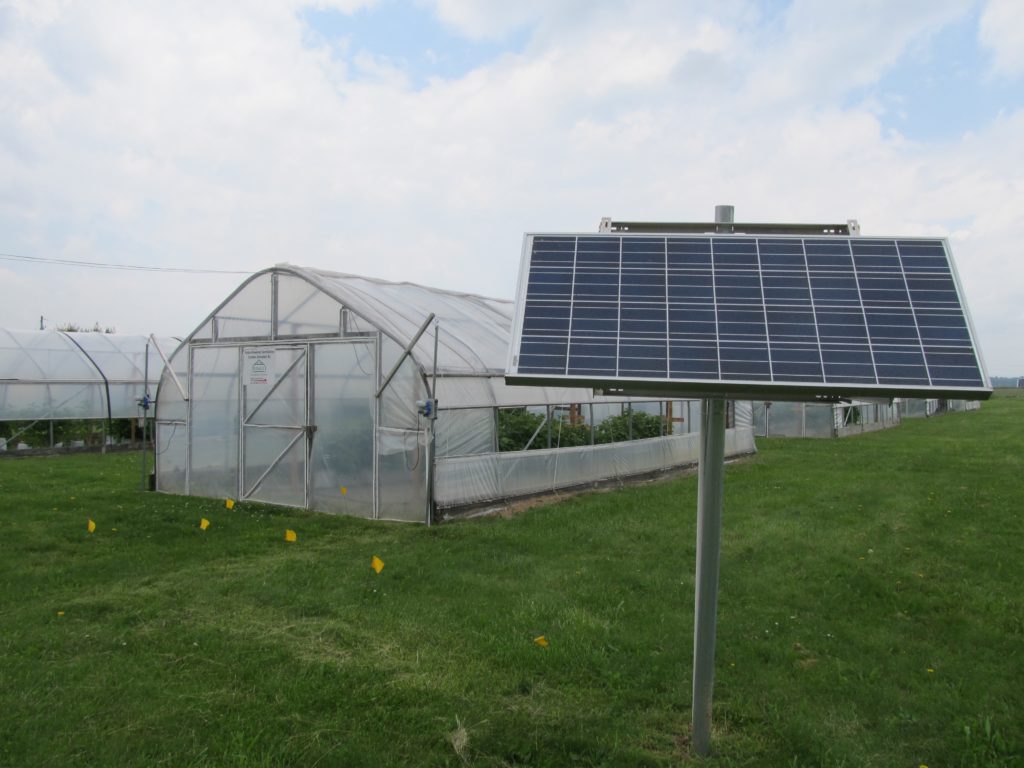
In Pennsylvania, Tom Ford, commercial horticulture educator, Cambria County; Jeff Stoltzfus, farm food safety educator located in Lancaster County and Tom Butzler, Extension educator in Clinton County, said they expected the number of high tunnels to triple within five years, especially as field production of tomatoes migrates into the protection afforded by high tunnels.
Butzler noted that produce auctions are gaining strength in Pennsylvania, and are supplied mainly by members of the Plain sect community, and he is observing they are switching out of dairy and adding high tunnels to their operations, allowing them to get a very early start on produce production and better utilization of labor.
In Maryland, Bryan Butler, principal agent in Carroll County, said with NRCS providing money for purchase of high tunnels, he believed it left people less vested in them compared to 10 or more years ago. He said growers tended to view high tunnels as an answer to all growing issues and do not pay close enough attention to their management.
Rose Ogutu, horticulture specialist, Delaware State University, and Dr. Gordon Johnson, Extension specialist, University of Delaware, noted that they have a large concentration of Asian growers – one grower having over 30 high tunnels. They expect to see more integration of biological controls in IPM in the high tunnels in the future, and an increase in usage by the Asian growers.
One of the biggest concerns of Chris Mullins, Extension specialist, Virginia State University, is that many who sign up for NRCS’s high tunnel program have no idea what they are going to grow or how to market the crop. He said there was a need for more education prior to getting the grant. Like Pennsylvania, the growing conditions in Virginia vary from the Shenandoah mountains to the Tidewater region and recommendations need to be tailored to that specific region.
Lewis Jett, Extension specialist, West Virginia University, expressed concern that high tunnels are not being utilized to full efficiency and more food production year around is possible in a high tunnel. He felt that the use of high tunnels will most certainly increase due to the erratic weather experienced the past few years that has made high tunnel protected culture production a necessity.
Michelle Infante-Casella, agricultural agent, Gloucester County; Wes Kline, agricultural agent, Cumberland County; and Bob Muth, Muth Family Farms in New Jersey, see continued growth of high tunnels, especially with fresh market tomatoes as growers are abandoning field production due to disease pressure and quality issues as result of rainfall in the field and moving into high tunnels.
– William James Lamont Jr. is a correspondent for Vegetable Growers News. He is also a professor emeritus of vegetable crops, Penn State University Department of Plant Science.
Above. winter production of hardy crops in a high tunnel. Photo: William Lamont
